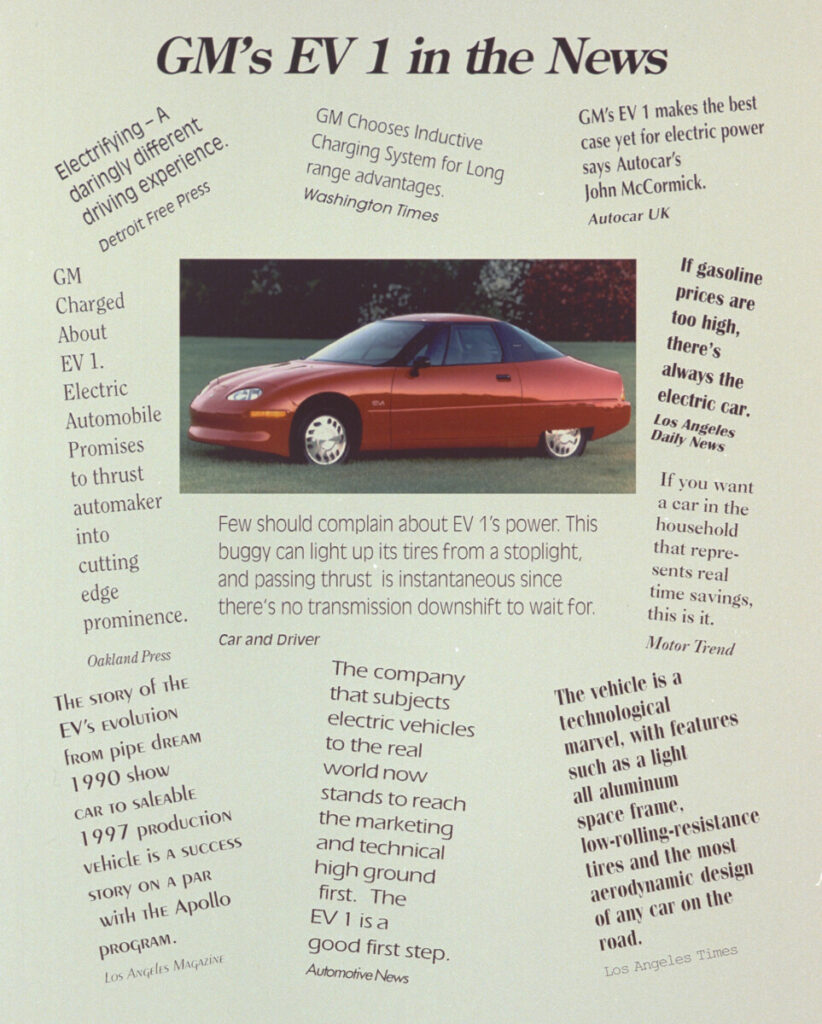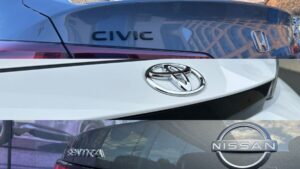WASHINGTON (HUNS) — As thousands of Howard University students make the trek up Georgia Avenue to campus, they unknowingly walk by an important piece of automotive history.
Nestled in the parking lot of the Lewis K. Downing building sits a General Motors (GM) EV1, a bright red two-door from the late 1990s that looks alien compared to the modern cars that surround it.
In its heyday, however, the EV1 was seen as the future of automotive innovation. It reignited the interest for mass-produced electric vehicles at a time when they were unpopular and was a precursor to the battery-powered plug-in models we see on the roads today.
Out of the 1,117 EV1s made over a three-year period, only about 40 examples remain after GM brought back and crushed most of them due to low sales.
So, what happened to the EV1 and how did this now-rare machine end up on our campus?
At the 1990 Los Angeles Auto Show, GM revealed the Impact, a concept car that would eventually transform into the EV1. The Detroit-based manufacturer had high hopes for it, as the company planned to produce 100,000 units per year, which was unheard of for an electric vehicle at the time.
“Back in those days, the mere thought of making an electric car was, ‘Are you crazy? This would never work,’” said Greg Morrison, automotive journalist.
As an attempt to reduce air pollution, the California Air Resources Board (CARB) in the same year ordered seven automakers, including GM, to have zero-emission vehicles comprise 2% of their sales by the end of the decade.
After years of testing and development, the EV1 would enter production in 1996. It was powered by an alternating current lead-acid battery system that made 137 horsepower and offered an EPA rated range of 70 to 100 miles. Later models had the option for a nickel-metal hydride battery pack that improved the range to up to 160 miles.
Though the EV1 was solely offered in Southwestern U.S. markets, and the only way to own one was to lease it for $399 a month ($799 in today’s money), the EV1 would find its way to different areas in the country as a way gauge public reception and for testing purposes.
“We donated vehicles to institutions like museums and universities,” said Sabin Blake, director of communications for GM.
Throughout its lifespan, the EV1 was positively received for its quietness and subtlety swift performance. “The EV1 drives a real car and not a glorified golf cart,” MotorWeek host John Davis said in his review of the car in 1997.
But no car was without its problems, and the EV1 had a glaring one.
“The battery was too heavy and took eight hours to charge,” Morrison said. “And 70 miles of range is nothing compared to what we have now. It was a nice car, but the technology just wasn’tadvanced enough. It was more convenient to drive and maintain a gas-powered vehicle.”
After the CARB zero-emission initiative was relaxed, the GM EV1’s production ceased in 1999, with the leasing program ending a few years later in 2003. Afterwards, the automaker would destroy almost all recalled models. In recent years, General Motors has fully embraced electric vehicles thanks to massively updated and sustainable technology.
Though Howard’s EV1 has been stationary for years, the College of Engineering and Architecture says it is not abandoned.
Maybe one day, we’ll see this historic vehicle restored and ready to tackle the streets again.
Kevin Vaughn is a reporter for HUNewsService.com. He also covers environmental, energy and transportation stories.








